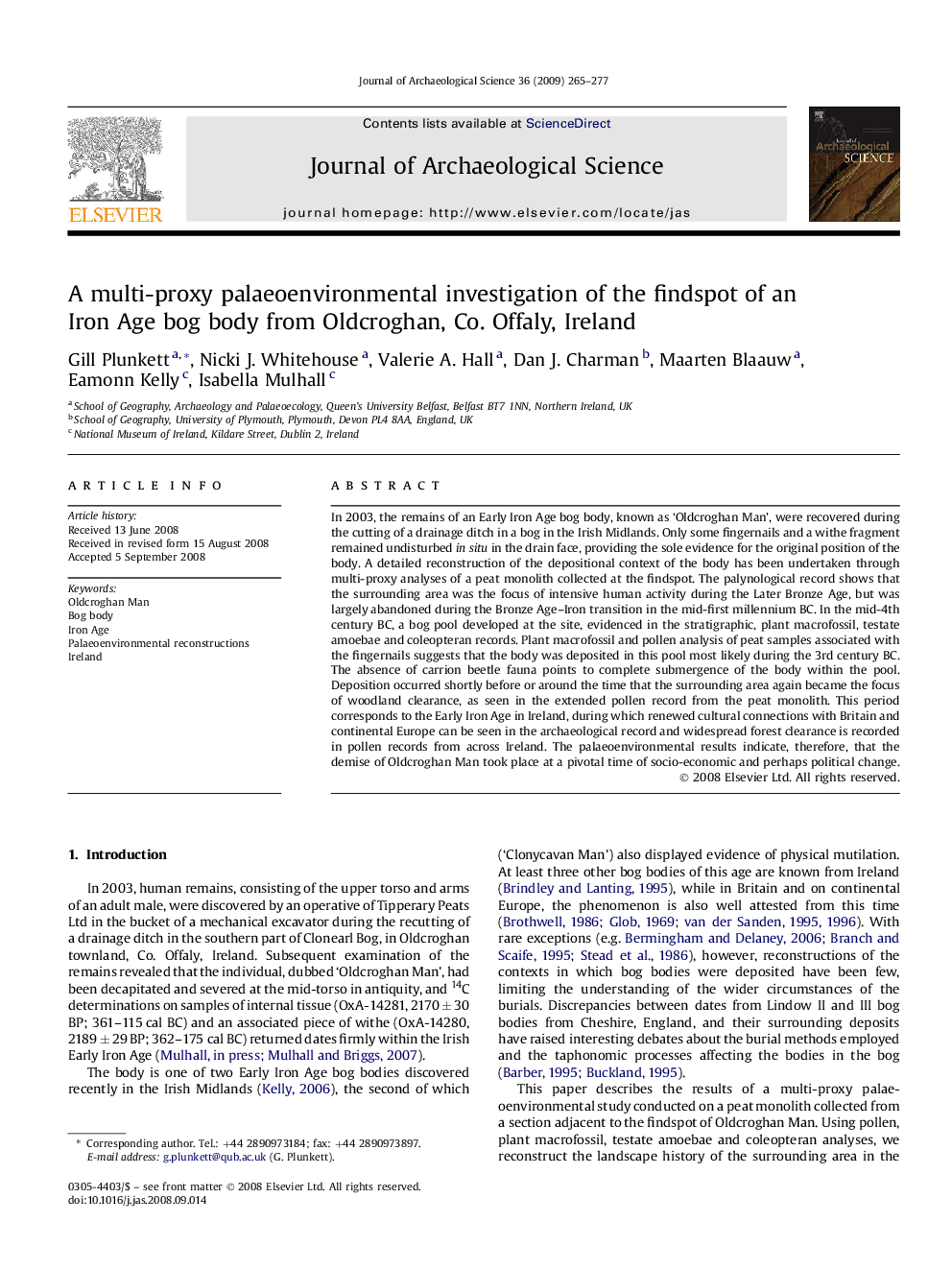| Article ID | Journal | Published Year | Pages | File Type |
|---|---|---|---|---|
| 1036238 | Journal of Archaeological Science | 2009 | 13 Pages |
In 2003, the remains of an Early Iron Age bog body, known as ‘Oldcroghan Man’, were recovered during the cutting of a drainage ditch in a bog in the Irish Midlands. Only some fingernails and a withe fragment remained undisturbed in situ in the drain face, providing the sole evidence for the original position of the body. A detailed reconstruction of the depositional context of the body has been undertaken through multi-proxy analyses of a peat monolith collected at the findspot. The palynological record shows that the surrounding area was the focus of intensive human activity during the Later Bronze Age, but was largely abandoned during the Bronze Age–Iron transition in the mid-first millennium BC. In the mid-4th century BC, a bog pool developed at the site, evidenced in the stratigraphic, plant macrofossil, testate amoebae and coleopteran records. Plant macrofossil and pollen analysis of peat samples associated with the fingernails suggests that the body was deposited in this pool most likely during the 3rd century BC. The absence of carrion beetle fauna points to complete submergence of the body within the pool. Deposition occurred shortly before or around the time that the surrounding area again became the focus of woodland clearance, as seen in the extended pollen record from the peat monolith. This period corresponds to the Early Iron Age in Ireland, during which renewed cultural connections with Britain and continental Europe can be seen in the archaeological record and widespread forest clearance is recorded in pollen records from across Ireland. The palaeoenvironmental results indicate, therefore, that the demise of Oldcroghan Man took place at a pivotal time of socio-economic and perhaps political change.
